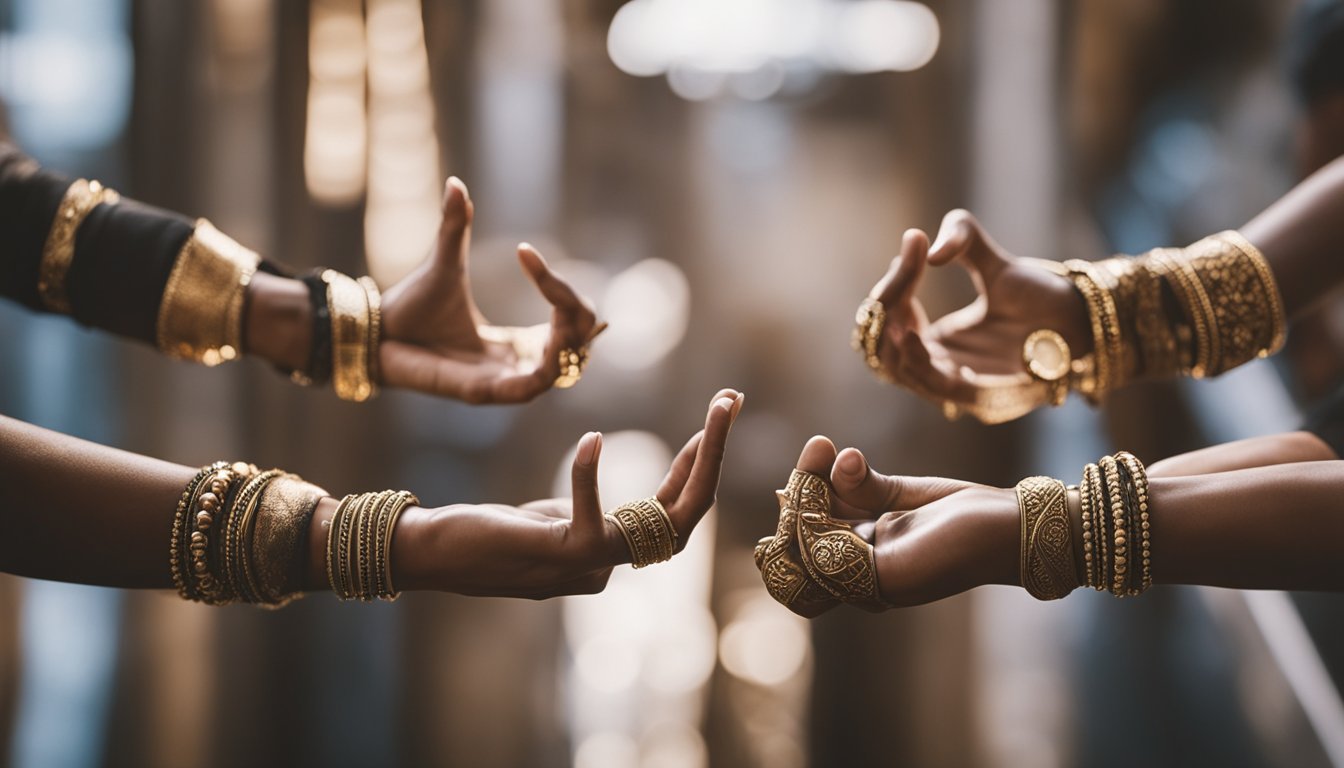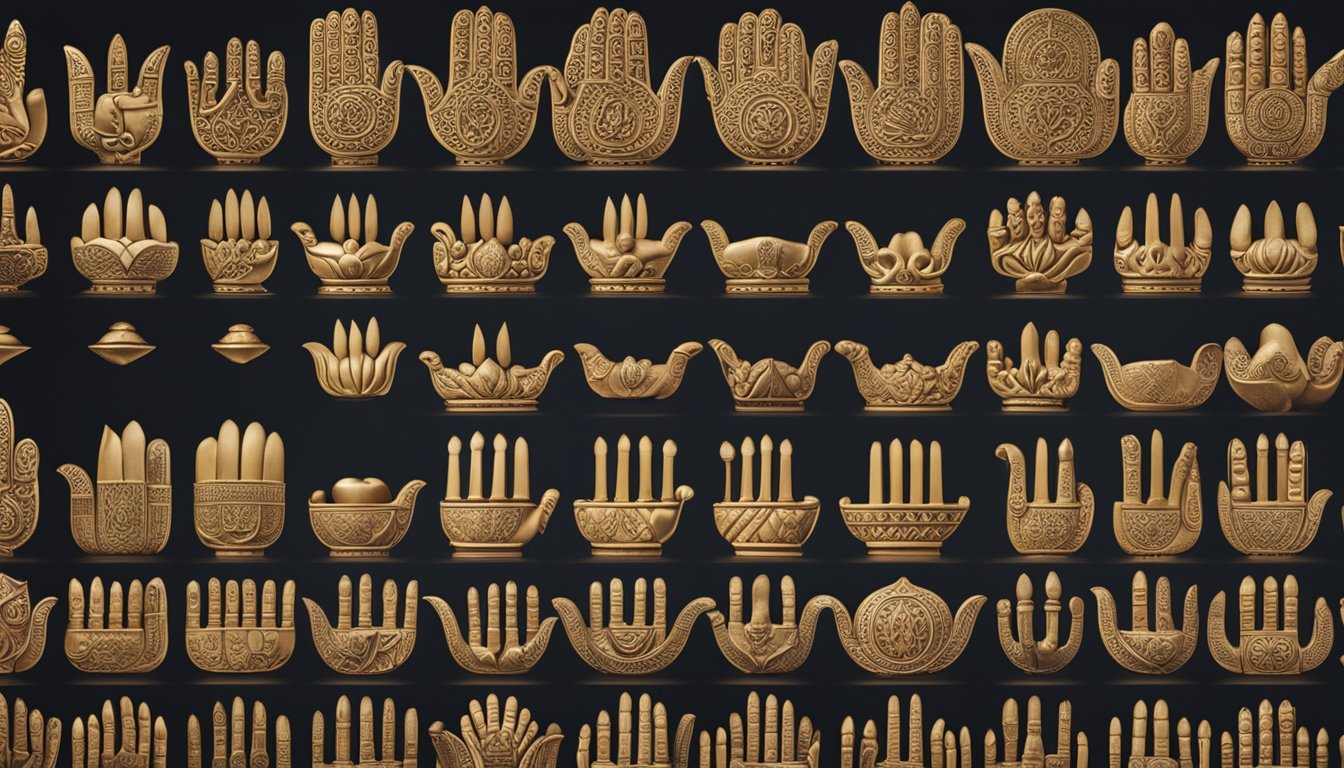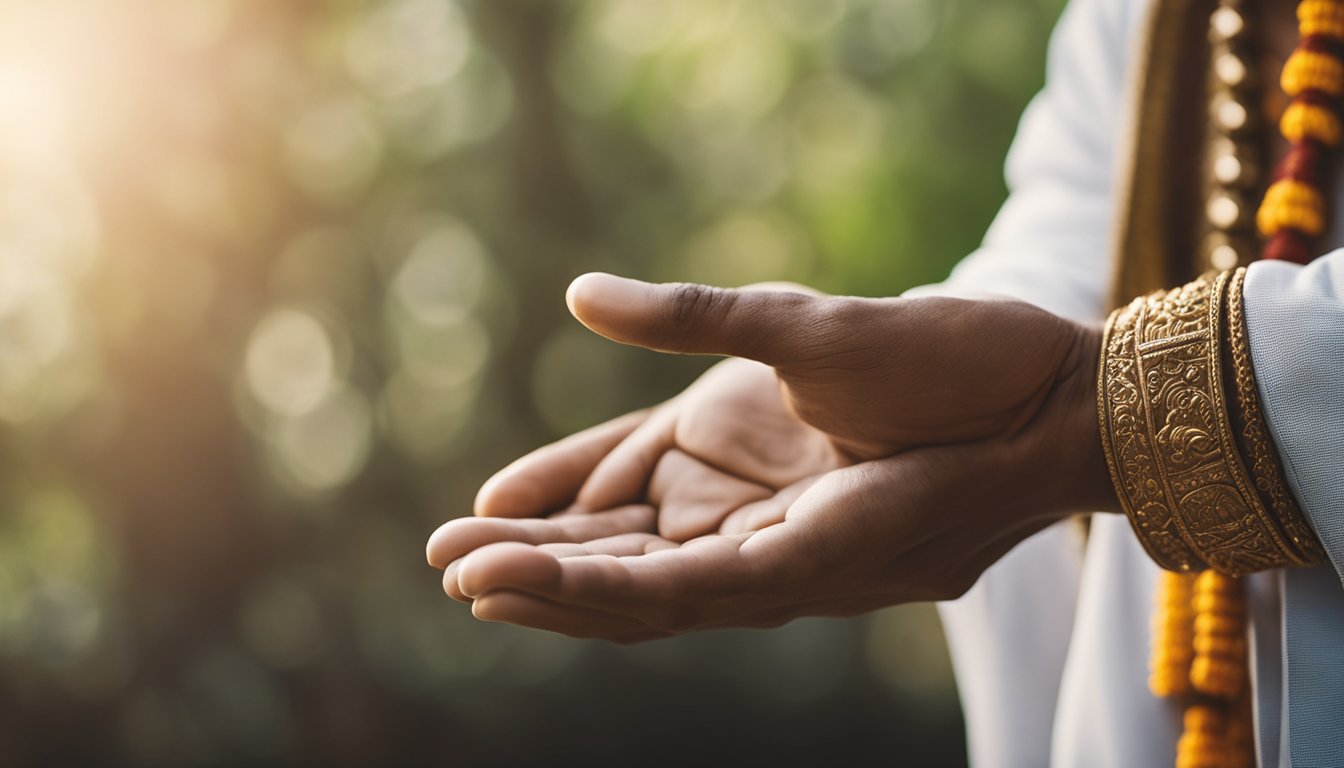Mudras, or hand gestures, have been an integral part of many ancient cultures and traditions for centuries. These gestures are believed to have spiritual and healing powers and are often used in meditation and yoga practices. Over time, mudras have evolved with the changing times and have become an important aspect of modern wellness practices. In this article, we will explore the evolution of mudras, tracing their development from ancient rituals to modern practices.

The practice of mudras dates back to ancient India, where they were used in religious rituals and meditation practices. These hand gestures were believed to have the power to enhance spiritual and physical well-being. Mudras were also used in dance performances, where they were used to convey different emotions and expressions.
As time passed, mudras spread to other cultures and traditions, including Buddhism, Taoism, and Chinese medicine. Each culture added its own unique interpretations and meanings to the hand gestures, and mudras continued to evolve. Today, mudras are an important aspect of modern wellness practices, and are used in yoga, meditation, and other healing practices. Understanding the evolution of mudras can help us appreciate their significance and incorporate them into our daily lives.
Origins of Mudras

Ancient Rituals
Mudras have been an integral part of Indian and Buddhist spiritual practices for thousands of years. The earliest references to mudras can be found in the ancient Hindu scriptures known as the Vedas, which date back to around 1500 BCE. These texts describe the use of mudras during rituals and meditation practices.
In the Vedic tradition, mudras were used to channel and direct the flow of energy within the body. They were believed to have the power to awaken dormant spiritual energy and promote healing and wellbeing. Mudras were also used to enhance concentration and focus during meditation.
Over time, mudras became an important part of other spiritual traditions, including Buddhism and Jainism. In these traditions, mudras were used to symbolize different aspects of the teachings and to help practitioners connect with the divine.
Cultural Significance
Mudras also have cultural significance in India and other parts of Asia. They are often used in dance and theater performances to convey emotions and tell stories. In Indian classical dance, mudras are an essential part of the vocabulary, with each gesture having a specific meaning.
Outside of India, mudras have gained popularity in the West as a form of alternative therapy and as a way to reduce stress and anxiety. Yoga practitioners often use mudras during their practice to deepen their connection with their body and mind.
Overall, the origins of mudras are deeply rooted in ancient spiritual practices and have evolved to become an important part of cultural and therapeutic practices around the world.
Classification of Mudras

Hand Gestures
Hand gestures or Hasta Mudras are the most common type of mudras. These mudras are performed using the fingers and palm of the hand and are used to represent different emotions, ideas, and concepts. Hasta Mudras are classified into two types: Asamyukta Hasta (single hand gesture) and Samyukta Hasta (double hand gesture).
Asamyukta Hasta consists of 28 mudras, and Samyukta Hasta consists of 23 mudras. Some of the popular hand gestures include Abhaya Mudra (fearlessness), Chin Mudra (consciousness), and Gyan Mudra (knowledge).
Body Gestures
Body gestures or Kaya Mudras are performed using different parts of the body, including the eyes, tongue, and facial muscles. These mudras are used to express different emotions and ideas and are commonly used in dance and theater.
Kaya Mudras are classified into four categories: Shiro Mudra (head gesture), Drishti Mudra (eye gesture), Greeva Mudra (neck gesture), and Padabhava Mudra (foot gesture). Some of the popular body gestures include Ardha Matsyendrasana (half spinal twist), Bhujangasana (cobra pose), and Tadasana (mountain pose).
Yogic Mudras
Yogic Mudras are used in yoga practices to enhance concentration and meditation. These mudras are performed using the hands and fingers and are believed to stimulate different parts of the body and mind. Yogic Mudras are classified into five categories: Prana Mudra (vitality gesture), Apana Mudra (digestion gesture), Surya Mudra (sun gesture), Linga Mudra (heat gesture), and Varun Mudra (water gesture).
Some of the popular yogic mudras include Shunya Mudra (emptiness gesture), Maha Mudra (great gesture), and Viparita Karani (legs-up-the-wall pose).
Mudras in Religious Practices

Mudras have been an integral part of religious practices in many cultures for thousands of years. They are used as a means of communication with the divine and as a way to enhance the spiritual experience of the practitioner. In this section, we will explore the use of mudras in three major religions: Hinduism, Buddhism, and other religions.
Hinduism
In Hinduism, mudras are used in various rituals and ceremonies. They are believed to have the power to direct the flow of energy in the body and to enhance the spiritual experience of the practitioner. Some of the most commonly used mudras in Hinduism include:
- Anjali Mudra: This mudra is used as a greeting gesture and is commonly used in prayer and worship.
- Gyan Mudra: This mudra is used to improve concentration and memory and is commonly used during meditation.
- Chin Mudra: This mudra is used to stimulate the flow of energy in the body and is commonly used during pranayama (breathing exercises).
Buddhism
In Buddhism, mudras are used as a means of communication with the divine and as a way to enhance the spiritual experience of the practitioner. They are used in various rituals and ceremonies and are believed to have the power to direct the flow of energy in the body. Some of the most commonly used mudras in Buddhism include:
- Abhaya Mudra: This mudra is used as a gesture of fearlessness and protection and is commonly used in depictions of the Buddha.
- Dhyana Mudra: This mudra is used during meditation and is believed to help the practitioner achieve a state of calm and concentration.
- Vitarka Mudra: This mudra is used to represent the transmission of knowledge and is commonly used in depictions of the Buddha teaching.
Other Religions
Mudras are also used in other religions such as Jainism, Sikhism, and Taoism. In Jainism, mudras are used in various rituals and ceremonies and are believed to have the power to direct the flow of energy in the body. In Sikhism, mudras are used in the practice of Kundalini Yoga and are believed to help the practitioner achieve a state of balance and harmony. In Taoism, mudras are used in various practices such as Qigong and Tai Chi and are believed to have the power to direct the flow of energy in the body.
In conclusion, mudras have played an important role in religious practices for thousands of years. They are used as a means of communication with the divine and as a way to enhance the spiritual experience of the practitioner. Whether you practice Hinduism, Buddhism, or any other religion, incorporating mudras into your practice can help you achieve a deeper connection with the divine and enhance your spiritual journey.
Mudras in Healing and Meditation

Chakra Balancing
Mudras have been used for centuries to balance the chakras, which are the energy centers in the body. Each chakra is associated with a specific mudra that helps to activate and balance the energy flow within that chakra. For example, the thumb and index finger touching in the Chin Mudra is associated with the root chakra, while the thumb and little finger touching in the Gyan Mudra is associated with the crown chakra.
Therapeutic Use
Mudras are also used therapeutically to address various physical and emotional imbalances. For example, the Vayu Mudra, which involves touching the index finger to the base of the thumb, is believed to help with anxiety and stress. The Prana Mudra, which involves touching the ring and little finger to the tip of the thumb, is believed to help with fatigue and low energy.
In addition to these specific mudras, there are also general mudras that can be used for overall health and wellbeing. The Anjali Mudra, which involves bringing the palms together in front of the heart, is a common mudra used for meditation and is believed to help with concentration and focus.
Overall, the use of mudras in healing and meditation can be a powerful tool for promoting balance and wellness in the body and mind. By incorporating these simple hand gestures into daily practice, individuals can tap into the ancient wisdom of mudras and experience their many benefits.
Contemporary Adaptations

Performing Arts
In recent years, mudras have become increasingly popular in the performing arts. Dancers, actors, and musicians have incorporated mudras into their performances, adding a new dimension of expression. Mudras are used to convey emotions, tell stories, and create beautiful visual effects.
For example, in Indian classical dance, mudras are an essential part of the performance. Each mudra has a specific meaning and is used to convey a particular emotion or idea. Mudras are also used in other dance forms, such as ballet and contemporary dance.
In addition to dance, mudras are also used in theater and film. Actors use mudras to convey emotions and portray characters. Mudras are also used in film to create visual effects, such as showing a character’s thoughts or emotions.
Modern Spirituality
Mudras have also found a place in modern spirituality. Many people use mudras as a form of meditation or to enhance their yoga practice. Mudras are believed to have healing properties and can be used to balance the body’s energy.
For example, the Gyan mudra, or “seal of knowledge,” is believed to enhance concentration and memory. The Shunya mudra, or “seal of emptiness,” is believed to relieve earaches and headaches. The Prana mudra, or “seal of life,” is believed to increase vitality and energy.
Mudras are also used in alternative medicine. Ayurvedic practitioners use mudras to treat various ailments, such as digestive issues and anxiety.
Overall, mudras have evolved from ancient rituals to modern practices. They have found a place in the performing arts and modern spirituality, adding a new dimension of expression and healing.
Future of Mudras

Innovation and Evolution
As the practice of mudras continues to evolve, new innovations are being introduced to enhance their effectiveness. One such innovation is the use of technology to monitor and track the progress of mudra practitioners. Wearable devices and apps can help individuals to maintain proper form and track their progress over time.
Another area of innovation is the integration of mudras with other practices such as yoga and meditation. Combining mudras with these practices can lead to a more holistic approach to wellness, promoting physical, mental, and emotional wellbeing.
Cross-Cultural Exchange
Mudras have been practiced for centuries in various cultures around the world. As the world becomes more interconnected, there is an opportunity for cross-cultural exchange of mudra practices. This exchange can lead to a deeper understanding and appreciation of the different cultural practices and their benefits.
In addition, the exchange of mudra practices can lead to the development of new mudras that incorporate elements from different cultures. This can lead to a more diverse and inclusive practice that is accessible to people from all backgrounds.
Overall, the future of mudras looks bright as new innovations and cross-cultural exchange continue to shape and evolve this ancient practice.
Dr. Harlan Kilstein is a certified yoga teacher, hypnotherapist, and a teacher of the Law of Attraction since 1975.
After an immersion in yoga and his certification by the Yoga Alliance, he began studying mudras and invented Finger Healing.




